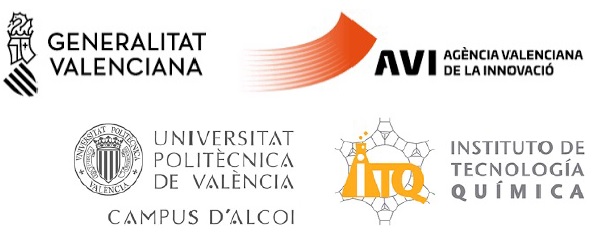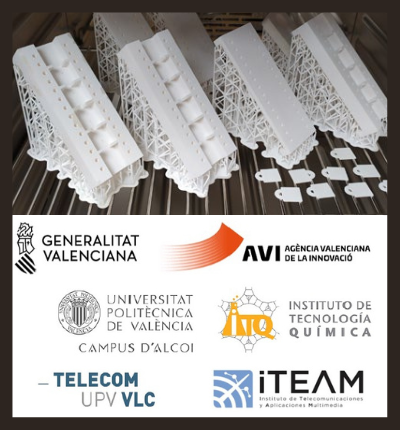A multidisciplinary team has developed an innovative manufacturing methodology using additive manufacturing, metallisation and integration of high frequency devices for use in terrestrial and spatial communications systems. This team is composed of the polytechnic university of Valencia (UPV) and the Spanish National Research Centre (CSIC), the Institute of Telecommunications and Multimedia Applications (ITEAM), the Institute of Chemical Technology (ITQ) and the Higher Polytechnic School of Alcoy (EPSA) and AIJU’s Innovative Materials and Additive Manufacturing area.
As a result of the project activities, a complete set of filters, antennas, resonators and transmission lines have been developed, using integrated substrate and waveguide technology, which are perfectly functional, that is, they have the electrical response for which they were designed. For this purpose, additive manufacturing has been used with different polymers and a subsequent autocatalytic and galvanic metallisation process. The manufacturing process of the prototypes has been optimised to achieve high dimensional and surface precision, which makes this technology optimal for the manufacture of high-frequency devices.

In addition, dimensional control, temperature, power and vibration tests have been carried out to prove the manufacturing tolerances of the process, the response to temperature changes to mechanical waves and the power handling of the manufactured devices.
Moreover, the additive manufacturing technology employed enables fast and cost-effective manufacturing with high quality results. As a consequence, these devices provide a fundamental advantage in terms of flexibility and modularity thanks to an innovative system of integration in planar technology systems (on printed circuit boards), which allows them to work together with the rest of the system.
The two year project ALFREC3D – INNVA1/2020/84 has been funded by the Valencian Innovation Agency (AVI) in its Line 1. Valorisation, transfer and exploitation of R&D results undertaken by companies. The scientific-technical team included researchers from the UPV and CSIC, Carmen Bachiller, Vicente Boria, Vicente Nova and Álvaro Ferrer from ITEAM, Luisa Marín and Luis Ponce from ITQ and Santiago Ferrándiz from EPSA.
More information: Asunción Martínez – prototipos@aiju.es


